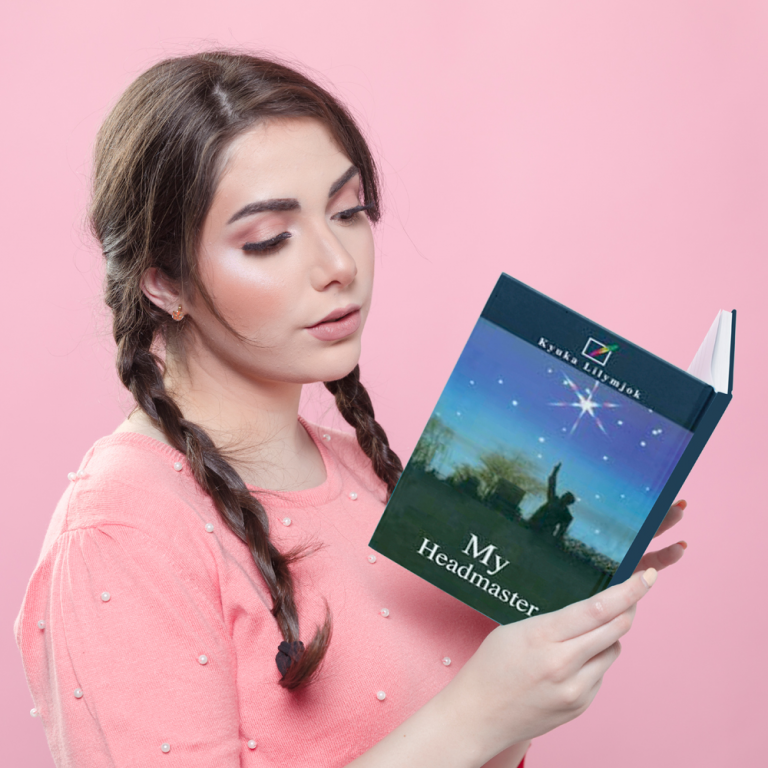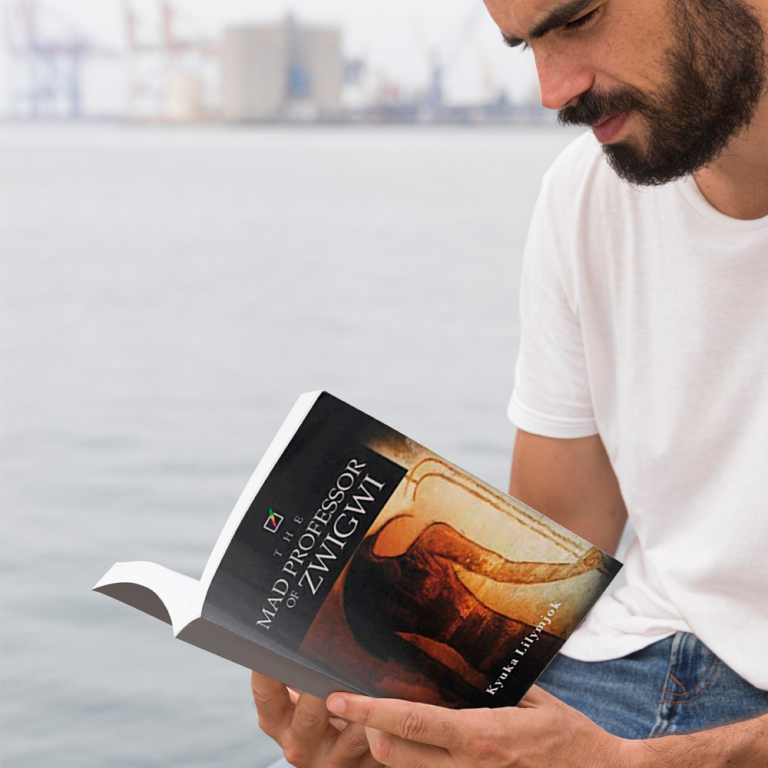Abel Joseph
Department of English and Literary Studies
Federal University, Lokoja
abeljoseph@ymail.com
Abstract
The oral narrative genre has been an integral part of the cultural and social life of the people in traditional African societies long before colonial intrusion. As an essential and core element of African cultural personage, oral narratives defined not only the texture of the African cosmology and traditional ethos but, in many ways, charted a path to the realisation of the fundamental basis of human experience and the creation as well as sustenance of a threnodic essence. Indeed, the tale tradition, by its oral nature, essentially works through the media of myth and fantasy, and suspension of disbelief in order to create a sustainable ambience of pseudo-realism. With its mutational ability, its form is defined by the wisdom and guile of the performer who is at liberty to create, recreate or even, redesign the narrative structure and, or, texture of the tale. This paper is interested in the blending of the oral narrative aesthetics and the mainstream novelistic genre to produce a narrative that evokes and mediates the African socio-cultural essence in Kyuka Lilymjok’s The Village Tradesman.
Introduction
In many African societies, oral narratives are a significant aspect of life which inculcate ennobling morals in children and adults alike in addition to being entertaining. In contemporary Africa, most written narratives have been considerably influenced by the oral traditional elements of proverbs, myths, incantations, aphorisms, folktales, legends and riddles. It is in this regard that over fifty years after political independence, there is hardly any Nigerian author who has not drawn from, or is yet influenced by oral tradition. Beginning from the early Hausa writings of the 1930s, texts such as Abubakar Imam’s Ruwan Bagaja, Muhammadu Gwazo’s Idon Matambayi, Rupert East and John Tafida Wusasa’s Magana Jari Ce, Bello Kagara’s Gandoki, and Amos Tutuola’s The Palm Wine Drinkard in 1952 to Ben Okri’s The Famished Road, many may have had their roots in the oral traditions of the people. These texts, in many ways, signify the ability of the interaction between oral traditions and the literary to open an engaging repertoire of imaginative creativity. Indeed, it is this interaction that makes African literature unique.
There are several ways by which writers construct the contexts of their fictions to demonstrate or create a certain ‘truth’ in narratives. From the nineteenth-century, novels began to draw a much closer realistic representation of human life and experience in a way that shifted focus from the romance tradition of the ideal and the fantastic to a realistic depiction of the ‘social world’. According to Abrams (174), “realistic fiction is written so as to give the effect that it represents life and the social world as it seems to the common reader, evoking the sense that its characters might in fact exist, and that such things might well happen”. Against this backdrop of the ‘truthful’ or ‘realistic’ depiction of society, this paper is interested in the way in which reality has been extended and stretched beyond the limits of belief and also, creating a sense of subtle disbelief in the narrative.
The interest of this paper is locating the ‘echoing’ of the aesthetics of oral tale tradition such as myth and fairy tale in The Village Tradesman and how Lilymjok deploys such in reconstructing contemporary reality. The story of the protagonist, Mallam Nuhu goes beyond personal development to capture the general conditions of human existence.
Conceptualizing Pseudo-Realism
A number of sketchy definitions are drawn to provide a basis for the appropriation of the concept of pseudo-realism:
Pseudo-realism is a term used in a variety of discourses (often pejoratively) connoting any artistic and dramatic technique, or work of art, film and literature perceived as superficial, not-real or non-realistic. The term is often used to describe artistic methods deviating from what is commonly referred to as an accurate representation of reality. [http://worldofarts.eu/realism/]
Also, it is argued that pseudo-realism was “first used as a term to describe the films of 21st century which use heavy special effect, so much so that they look real. Today however, the word has become more generic and refers to almost any media imagery where the unreal is represented in such a way that they look real”. [www.pseudo-realism.com/whatisits.htm]
Furthermore, pseudo-realism:
had been a feature of Indian literature since time immemorial. The weaving of myth into history can be seen in almost all the great works of Indian Literature… such works do show the use of the abstract and the unreal, but juxtaposed in such a way as to render some kind of believability to the plot. The term is more applicable probably to the new Indian literature of the 21st century. In many of these works we see the use of pure fantasy and fantastic description of characters, plots and situations which do not quite fall within Magical realism and also do not present themselves as realism either”. (http://www.pseudo-realism.com/indianliterature)
From the given definitions, pseudo-realism deals with the sphere of augmented reality; perception that draws from the complexity of non-realistic elements, and blending such with bearable reality. Though not magical realism, pseudo-realism embraces a level of imagination that is at once amenable to the sense of the hyper, through the grafting of myths into the narrative to evoke a sense of truth, even though the veracity of such truth is hindered by the ‘extra’ that creates a sense of the impossible. It is on the basis of the foregoing summation that the concept of ‘Pseudo-realism’ becomes a valid literary and critical term for exploring Kyuka Lilymjok’s The Village Tradesman.
Oral Tale Tradition and its place in The Village Tradesman
To create and sustain a level of reality, Lilymjok draws extensively from the richness of the oral tale tradition and deftly grafts the oral into the written genre in an engaging manner. There is a way in which the story opens with a title in each chapter, like a fable, but also creates the sense of reality by mentioning a specific day and month. Also, the portrayal of the character of Mallam Nuhu follows the pattern of the folktale narrative tradition with all the elements of moral lessons inscribed in his personality. Mallam Nuhu is presented as a simple, itinerant village tradesman though a certain mystery surrounds this simplicity and ascetic appearance. In many ways, he is one with nature and environment; he seldom ventures out in his trading expeditions without first communing with nature. For instance, he derives encouragement from ants and their life patterns (9). The imagery of ants in the text is instructive in the way it draws attention to the imperative of unity, cooperation, communality, fellowship and diligence; and the progress that these engender. Consequently, The Village Tradesman, drawing from the lessons of the oral tradition, dwells on hypocrisy in society, hope, despair, ambition industry and perseverance.
The patterning of, and texture of the narrative follows that of oral narratives. Mallam Nuhu learns from the activities of ants, the invaluable lessons of industry and perseverance as he goes about his business of a village tradesman, ‘Dankoli’ (a hawker) selling women trinkets, odds and bits from village to village. In spite of human and natural difficulties, he does not despair even when ridiculed or his articles under-priced and undervalued by women, patronizers of his trade. Like the ants, Mallam Nuhu remains patient and resolute pursuing his vocation with the calmness of a sage.
Mallam Nuhu’s story is illustrative of the folktale tradition full of animal tricksters such as the tortoise and the hare who try to outsmart bigger animals like the lion and the elephant. Indeed, Lilymjok employs the fictional story of mysterious beings, ghosts, spirits and mermaids as he strengthens his narrative. Also, superstition and other beliefs run through The Village Tradesman like little fairies in Mini River. Such beliefs may include, for example, “one who sits under the baobab tree at noon day is likely to run mad” or “one who sits under a tree while it is raining will be struck by thunder and when such dies, he will go to paradise.”
To a large extent, the novel relies more on the oral tale tradition though utilizes a literary representation of the novelistic genre, full of extended metaphors, small but powerful anecdotes and a well-informed repertoire of traditional sayings and wisdom to express human experience. Many instances abound in the text where such sayings are deftly used. For instance, “Life is a joke, but nobody is laughing; it is a mango seed, it may slip from your hand while you are still licking it. (151). In the confrontation between Mallam Nuhu and the two notorious armed robbers Bilia and Hasau, there is an equal measure of verbal exchanges that demonstrate a deft manipulation of language such as, “…so the horse strikes fear into you and yet the horse rider does not?” (81); “the spit of a frog in a pond… is like the shrieking of an insect in a madhouse… no one sees it, no one hears it” (81); and the belief by the two robbers of Mallam Nuhu’s ability to transform into an octopus anytime they had planned to attack him in the forest (82).
Furthermore, the story is laced with sub-stories and sub plots (fables and allegorical stories) that further sustain the sense of mystery that usually accompanies oral narratives. The many ‘sub-stories’ simply flow into other narratives in a fluid sense of an oral story telling session handled by a dexterous narrator who deftly weaves together, a series of unconnected stories into one, with accompanying moral lessons to be drawn. As noted earlier, this accounts for the structuring of the text in such a way that each chapter retains a specific title corresponding to a specific thematic focus, beginning with A man and His Trade being the first chapter which introduces Mallam Nuhu and his article of trade, through to the last chapter titled: A Happy Return which draws the narrative to a close with Mallam Nuhu finally returning home to a life of fulfilment. The overall structure of the story is the creation and sustenance of a pseudo-realist ambience which at once, induces a sense of both the unreal and the real.
Considerably, this text demonstrates how the African oral narrative form can be textualized without losing much of its candour. The narrative thus, lends itself to an oral form while also drawing from the aesthetic structure of the novel form, which includes the division of the text into chapters and subtitles of days and precise dates for example, Sunday May 4th or “A man and His Trade”.
Although the first line of the first chapter demonstrates the novel’s affinity to oral tradition even in terms of the narrative, there is a sense in which the basic structure of the novelistic genre has been appropriated to create a unique harmonization of local motifs in a literary aesthetic mode. In the text, Dankolifor example, is described as “a simple, ordinary man…. slight of frame, tall and wary in disposition.”
The Village Tradesman is more than just a story of Mallam Nuhu’s travels and trading activities: It is a comprehensive compilation of many fables and anecdotes that exist in African traditional folklore. As is the tradition with all fables, the “novel” serves as a custodian, so to speak, of culture and custom. Lilymjok thus, creates a fiction, just like an oral tale which dwells mostly on human imagination to teach and emphasise the African tradition and cultural norms.
Fable as a Narrative strategy
Webster’s Encyclopaedia of Literature (1995: 399) defines fable as a “story of supernatural or marvellous happenings (as in legend, myth, or folklore); a narration intended to reinforce a useful truth; especially, one in which animals or inanimate objects speak and act like human beings. The fable differs from the ordinary folktale in that it has a moral that is woven into the story and often explicitly formulated at the end.” The foregoing definition encapsulates the entire characteristics that define the texture of fable tradition in most African traditional societies. It is a medium through which morals and ethics are taught and learnt. Relying on myths and legends, the stories are usually characterised by falsehood and innuendo. Since animals assume human characteristics and qualities in both speech and action in most fables, there is always the pun that is directed at the characters (animals) that embody the messages.
In The Village Tradesman, the entire narrative has been built on the structure of fable tradition as the plot weaves in and out of reality. There is a certain mystique and timelessness that defines the origin and personality of Mallam Nuhu and by extension, his trade:
… In the Darakuwa Plateau where he traded, very few villagers knew where Mallam Nuhu came from; his hometown. Some of them suspected he did not know where he came from either. To these villagers, he belonged to those rare species of humans that bear no biological relationship to anybody. Thus perceived, his articles of trade stood incarnated as his only relations. The man and his trade then wove into each other like a matting nest. The anonymity of his person in a curious way accentuated the value of his wares in the eyes of some of the villagers. (3)
This aura of mystery that surrounds Mallam Nuhu’s origin creates a sense of pseudo-reality in which the boundary between the surreal and the real fade into a seamless ambience. It is quite impressive how many beliefs and myths are intricately woven together by Lilymjok and how Mallam Nuhu spins through them in his daily rituals of hawking his wares through the villages. In Mallam Nuhu’s world, both the real and the surreal are collapsed into a unified essence where on the one hand he recognises the importance of relentless hard work and on the other hand, the presence of spirits and the belief in certain supernatural forces which provide the needed armour and luck in his enterprise. Learning from the activities of ants, Mallam Nuhu acknowledges later that “knowledge and wisdom lay buried in anthills” (9). As far as he is concerned, “…anthills embodied all that was required for human health and welfare. Was it unity for progress? Ants had it. Was it co-operation, a sense of community, a sense of fellowship? Ants were the best security agents. Was it industry? Ants were the most industrious of God’s creatures…” (9).
Extending his philosophy, Mallam Nuhu opines that “if only men would come to a binding accord on the thriving values in anthills, much of human misery would abate” (9). Mallam Nuhu’s sense of propriety and industry are thus influenced by the ants a great deal. “…day and night, ants were at work observing no sleep and knowing no permanent spot of abode; but ever on the move. The vocation of dankoli to him approximates the hyperactivity of the ants. He will have none of the indolence of a stationary tradesman” (9). In a significant way, the activities of the ants shape and reinforce Mallam Nuhu’s belief in his trade and inspires him to rededicate himself to it.
Arising from the wisdom he had acquired from ants, he understands money as a king that has no palace. Any courtier or palace politician of this king must seek the fortunes of his nomadic monarch in the fields. It is a god that has no shrine…it is a maid without a home….” (11).
Ants’ security intelligence becomes his talisman, which he uses to bind all adverse spirits, animals and human agencies which might attack him in the course of his journeys….” (11). Relying on these ants for his security, he would normally “find an anthill at the beginning of the forest to commune with the guardian spirits that guaranteed the security of an anthill in the forest” (12) before embarking on his travels. Ater his prayer, he performs some rituals with his laya (local charm or amulet) which gives him the needed confidence to embark on his travels across the forests and rivers across to the villages of his trade. In this context, there is a relaxed mood and tone which tends to suggest a certainty in the benevolence of the ants and as well, other spirits. This explains why “whenever he stood by an anthill, he could see in the ubiquity of anthills, the ubiquity of his trade and his security” (12).
Mallam Nuhu sees himself as “an authentic graduate of ants’ natural school of life. This school taught a man not only to be industrious, but to be patient with the little or much that his industry yielded for him” (14). He is a man who understands the ethics of his profession. Imbued with a ‘prompt sense of patience,’ he rarely gets angry. He was “as near agreeable to the vile as to the courteous. He had a prompt sense of patience that stood on guard of any flint of anger in him that ran the risk of being struck by trying customers” (13). Indeed, he is described further as a “man of pleasing contours” (13).
Myths and Beliefs: The pseudo-realistic ambience
One of the things that make the narrative of The Village Tradesman essentially exotic is the manner myths and beliefs are deployed. In this context, several myths and beliefs such as mushrooms; tall grasses; rainstone, and Jatau find expression in this narrative. For example, the myth of finding the taurikiki mushrooms in the forest. It was generally believed that “finding the mushrooms was celebrated not only on account of its material value to the person fortunate to find them, but on account of a belief that whoever found them would soon be rich” (23); the presence of a small bundle of bunsuru fegge grass; a “grass with long blades used as a purgative to chase away ants from farmlands and residences by farmers and house owners portends ill for the tradesman who relies so much on ants in his trade.” (24). Placing this grass by the side of the mushrooms indicates ownership by someone who had found the mushrooms earlier.
There was also the myth about the thunderbolt which was believed to have several medicinal properties. A woman in labour may be given water into which the rainstone had been soaked. After drinking such water, her labour and delivery were likely to be less painful and perilous. With the rainstone in one’s possession, one was immune from thunder strikes. When a man licked the bolt and spoke to his fellow, the voice of the man who licked the rainstone, like thunder, struck fear into the heart of his fellow who must oblige him. The Maguzawas, who refused to accept Islam, used the rainstone to bring rain and to stop it. They used it to make their crops grow and yield better and to diminish the harvest of their enemies. (25-26)
Discovery of the rainstone, much later on brings Mallam Nuhu into a close shave with danger in his encounter with Tambuwal, the Sarkin Noma of Shuruba. Shortly before this encounter however, another myth was mentioned; Jatau, which in Hausaland was something of a mermaid’’. It was a flaming appearance often sighted at night at a distance, but also capable of being sighted in the daytime….” (26). Jatau was powerful enough to grant wealth or some other favour to any man brave or fearless enough not to flee from it when it appears. Indeed, it was believed that “very rich people and exceptionally handsome people, if they were light complexioned were an incarnation of the flaming appearance and were therefore called Jatau” (26).
Mallam Nuhu also trades in garlic a vaccine and medicines that could prevent and cure pneumonia. However, “the pneumonia cure was known among yankoli (tradesmen) to attract mermaids and other water spirits so much that whoever had it and wade into any big water body, water spirits would claim him along with the pneumonia cure”(88).
From the foregoing, it is clear that The Village Tradesman demonstrates a capacity for the utilisation of myth and fable in a contemporary setting in a simple narrative format that engagingly draws the reader to a fuller understanding of traditional society. The interesting thing about the narrative is how, in spite of the infusion of fantasy, the use of local motifs and the flora and fauna of the local environment, the story does not descend into a fable or fairy tale.
In addition, because the story relies on the pseudo-realist mode, it draws on the tradition of fable and myth, such that the narrative flows in an episodic manner. This is why there are episodes in the story which could stand as independent and separate stories on their own. The connecting thread for these narratives however, is the protagonist, Mallam Nuhu. The story also has a fluid setting such that it is the major character, Mallam Nuhu’s itinerant movements that define the location of the narrative. The trope of the story is therefore as fluid and transient as the movements of Mallam Nuhu who transverses the length and breathe of the many “villages round and about the Darakuwa Plateau” (1).
There is a major significance in the deliberate use of myths and fables to underscore the place of morality, self-discipline, industry, patience and perseverance in human endeavour in The Village Tradesman. Mallam Nuhu for instance, demonstrates an uncanny sense of perception and knowledge, borne out of his practical experiences.
Narrative point of view and figurative language
One of the most remarkable strong points in The Village Tradesman is Lilymjok’s point of view and language. Delivered through an omniscient voice, the story unfolds with a deceptively natural candour through which the protagonist comes alive. There is, in a sense, the silencing of the authorial voice or intrusion in the narrative. The language is not only apt but figuratively constructed to illustrate a fuller awareness and reinforce meaning. Therefore, there is the domestication and adaptation of the English language to the local milieu through the infusion of Arabic and indigenous Hausa words and phrases, many of which were explained in the glossary (pp180- 185).
In addition, there are a number of figurative expressions that Lilymjok uses in this story. His use of language in recreating and conveying local colours, proverbs and rhetoric demonstrates his diligence as a writer who is in tune with his environment, and who thus, provides insight into a worldview of the harmony between nature and humanity. Drawing from the local milieu, his language is not only evocative, but also poetic. Consequently, proverbs, riddles and wise sayings are effectively deployed. “When you see a man in the sun, do not hasten to bring him to the shade”, “Life is like a mango seed. It can fall from your hand while you are licking it” (66); “‘the destiny of man is a masquerade…’ ‘…It dances to the right; it dances to the left… ’ ‘…no one knows its face’; ‘The world is the bride of the fool…’ ‘…And it divorces him when it is sweetest to him’ ”; ‘The fire that starts from the river…’ ‘Only Allah can quench it…’ (66) “…fortune is like a leaf in a whirlwind. Often, it is not the man who goes after it that catches it but the ground that chases it not…” (10). These proverbs and riddles not only enrich the storyline but provide deeper insights into the cultural topography of Northern Nigerian society from which the story is drawn.
Lilymjok also utilises figurative language in a way that a fuller picture of incidents and characters is presented. In describing the personality of Mallam Nuhu, the narrator states that “in the villages he was known, it was a common saying that the day Mallam Nuhu barks, the fire of his patience would consume the source of his annoyance” (p13). After the fight between two of Alhaji Nasiru’s wives, the narrator explains, “peace settled on the scene like a vulture on the scene of a departed battle” (p19). “…each time he assured himself all would be well if he leased out the rainstone to Tambuwal, a disturbing doubt like an uncleared mucus in his throat remained, warning him not to” (28); “standing in front of Tambuwal who not only knew his name, but appeared a man given to good humour, his fears rolled back many sheets” (29); “Mallam Nuhu sat down. Hunger sleeping uneasily in his stomach sat up and demanded for food” (29); “Mallam Nuhu replied also between mouthfuls of roasted yam that drained all the dews of the mouth leaving deserts in its wake” (30). In the chapter on The Backside of Greed where Mallam Nuhu set out to meet Tambuwal to collect his balance and thoughts of the many things he could do with the money raced through his mind, Lilymjok captures this feeling in an exotic manner as “prosperity like a seductive whore whispered into his ears and he was happy” (39).
On realising the futility of making Tambuwal swear by Aradu, the god of thunder, Mallam Nuhu’s discomfort is captured thus: “Despair, like a twisted cripple, limped forward and rapped her knuckles on the fragile skull of his hope and demanded for an apology” (44). Much later, when he thought that the god was known to make individuals who swore by it careless in order to strike them, his feeling find expression in “…these latter thoughts, like the weeding fingers of an old woman exercised to weeding, weeded the doubts that were about choking his decision to petition the Chief Priest of Aradu…” (45). The Chief Priest is also described as “a short rotund man who fitted into the small shrine like a snail into its shell was in the shrine with all the dignity and airs of his office. While his dignity was sober, his imperial air roamed about him and the small shrine like a prancing, horny cock” (45). These few examples are illustrative of how Lilymjok deploys figurative language in a perceptive manner to create an enduring narrative.
Conclusion
For those who lived their childhood in African villages, reading The Village Tradesman is like a journey back to the village they lived as children. Bushes, forests, rivers, streams, bush paths all come alive in the novel exciting the bucolic elements of those who had walked through similar fields and tracks of nature or had played in them. The novel is such a wilderness of nature that if a reader is unable to go to the countryside to enjoy his rural heritage, he may from his bed or chair at home enjoy his heritage by reading the novel. The novel not only connects one with nature, it takes one to the womb of the earth where ants – Mallam Nuhu’s teachers live.
From The Village Tradesman alone, it is evident that Kyuka Lilymjok stands out as an engaging but uncelebrated Nigerian novelist. He is an evocative and self-revelatorywriter who adorns his writings with interesting elements from oral tale tradition in an enriching blend with the novel genre. It is interesting how Lilymjok employs his knowledge of oral tradition to create a narrative pattern that fuses the aesthetics of the tale tradition with those of the novel genre. Indeed, the texture of such narrative is remarkable in the way he draws upon the aesthetics of oral narratives to set paradigms that help define the uniqueness of the Northern Nigerian prose narrative in English.
The Village Tradesman is a text that demonstrates how oral narrative tradition of myths and tales can find expression in a literary narrative form of the novel. Through the pseudo-realist mode, Lilymjok in a significant way grafts the mythic thoughts of age old traditional beliefs into a contemporary setting. Although the novel is not concerned with the larger issues of contemporary postcolonial politics, it is concerned with human situations and relationships. Through the major character, Mallam Nuhu, Lilymjok explores the larger issues of human natureexemplified in the portrayal of different characters with different shades of attitudes and personalities. The values of diligence, struggle and patience find expression in the character of Mallam Nuhu as he encounters different people in the different villages of his trade. In the same vein, there is the exploration of greed, dishonesty, and violence expressed in a few characters like Tambuwal, Binta, Alhaji Nasiru’s wife and the two thieves, Hasau and Bilia. In a non-complex linear manner, the story unfolds in an omniscient manner and in a gradual progression that eventually ends with Mallam Nuhu becoming rich and Tambuwal becoming insane in a way that creates a sense of poetic justice characteristic of most fables and tales. The most engaging attribute of this novel is the way in which the author delicately negotiates the trope of the real and the unreal through a balanced narrative strategy. By so doing, Lilymjok has transformed orality into a textual experience through a deliberate and compelling narrative that works through pseudo-realism.
Works Cited
Abrams, M. H. and Geoffrey Harpman. A Glossaryof Literary Terms. Eight Edition. Australia: Thomson Wadsworth, 2005.
Campbell. Joseph. The Power of Myth. New York: Doubleday,1988.
Griffiths, Gareth. African Literatures in English: East and West. London:Longman, 2000.
http://www.pseudo-realism.com/indianliterature.htm
http://worldofarts.eu/realism/
www.pseudo-realism.com/whatisits.htm
Ismaila Abdullahi, Garba Ismaila and Hamza Kamar. Toward Sustaining Creative Writing in Northern Nigeria. Ibadan: Kraft Books Limited, 2009.
Mpalive-Hangson, Msiska, and Hyland Paul. Writing and Africa. London and New York: Longman, 1997.
Preminger, Alex. Ed. Princeton Encyclopaedia of Poetry and Poetics. Enlarged Edition. Princeton, New Jersey: Princeton University Press, 1974.
Segal, Robert. Myth: A Very Short Introduction. London: Oxford University Press, 2004.
Kyuka Lilymjok, The Village Tradesman. Zaria: Faith Printers International Kongo, 2003.










